THE GLITCH OF THE MISSING SKULL
Paola Poletto, February, 2023
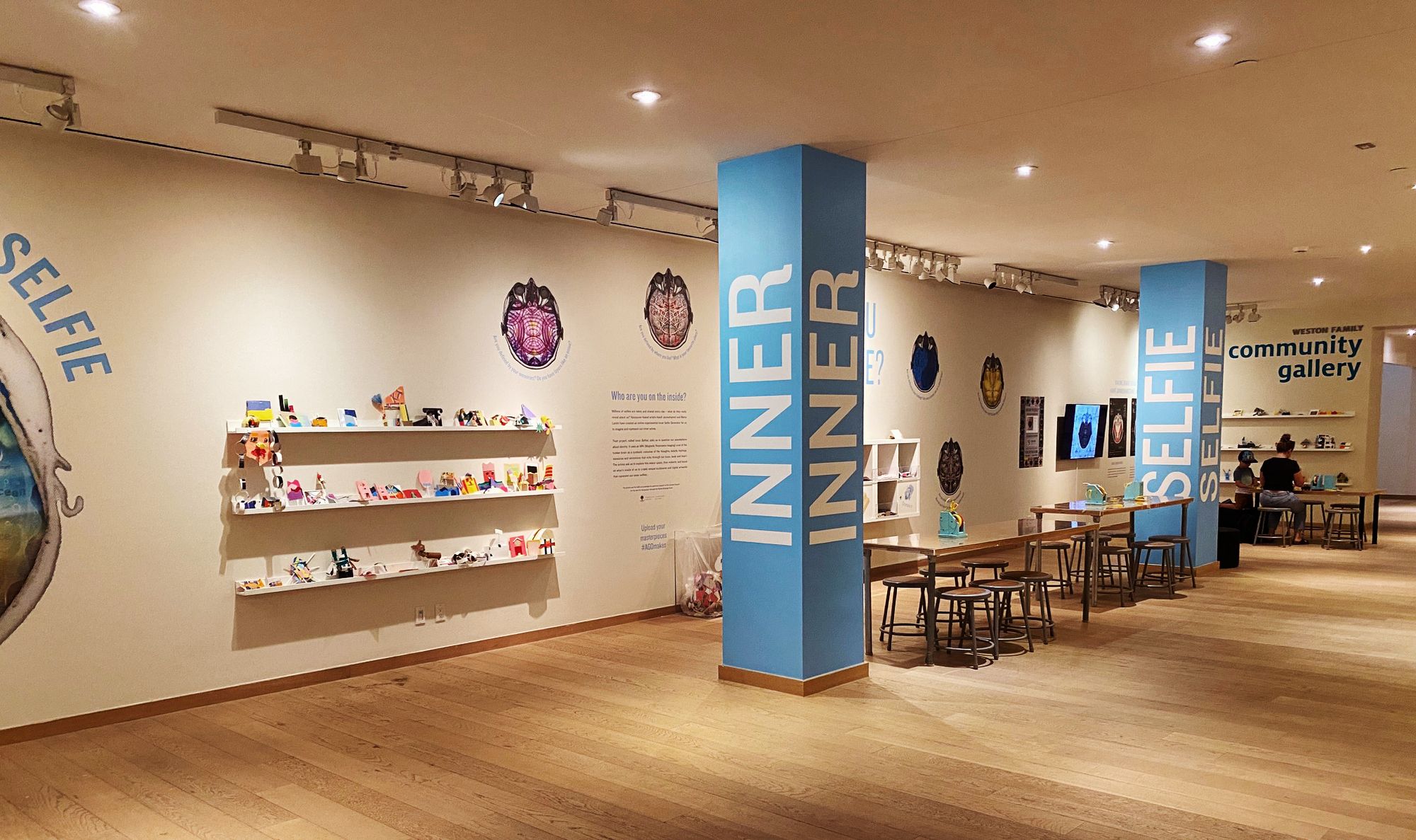
Inner Selfie: the glitch
of the missing skull
Paola Poletto
Director, Engagement & Learning, AGO
January, 2023
In 2020, during global lockdowns in response to the spread of COVID-19, the Art Gallery of Ontario (AGO) delivered online public programs to over 700,000 people direct to their homes. As Director of Engagement & Learning at the AGO, the pivot to online programming signalled a deeper anxiety and conversation in me about the future of museum programming and audience engagement. Today, my world continues with unrest. My digital and in-person selves share my space and time, issuing forward an intensity to know myself in a world fractured and in crisis. I have felt simultaneously disconnected and connected to my communities of practice. Several existential questions also surfaced for the museum field and by extension, myself, troubling the core of my practice and the role of the museum. I began searching for a new metaphor for museum, one that could expand space and connect people and technology, communities, with greater intentionality. A hybrid offers me a pathway toward a new museum metaphor inspired by the glitch (curious fissures, beautiful mistakes and wonder-filled non-computes).
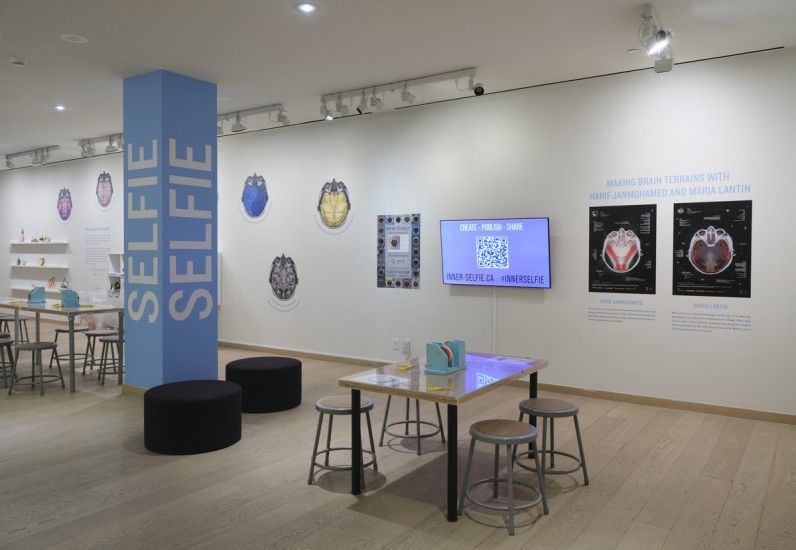
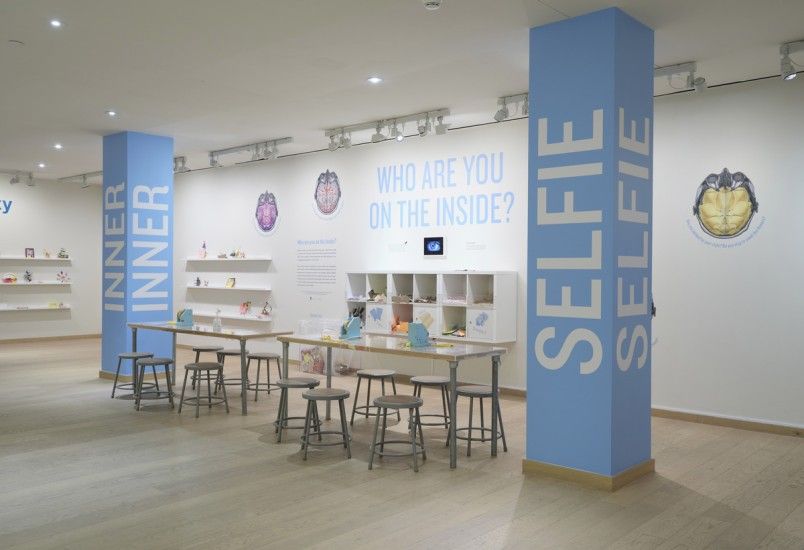
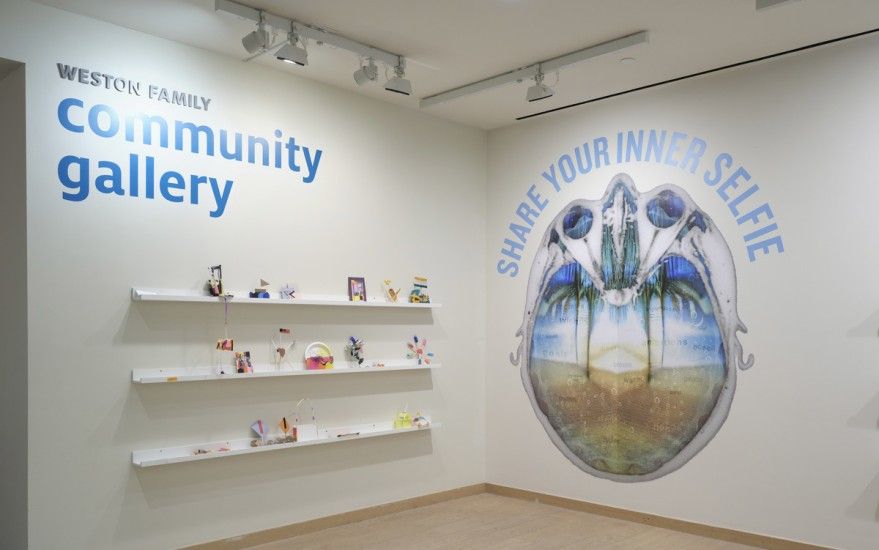
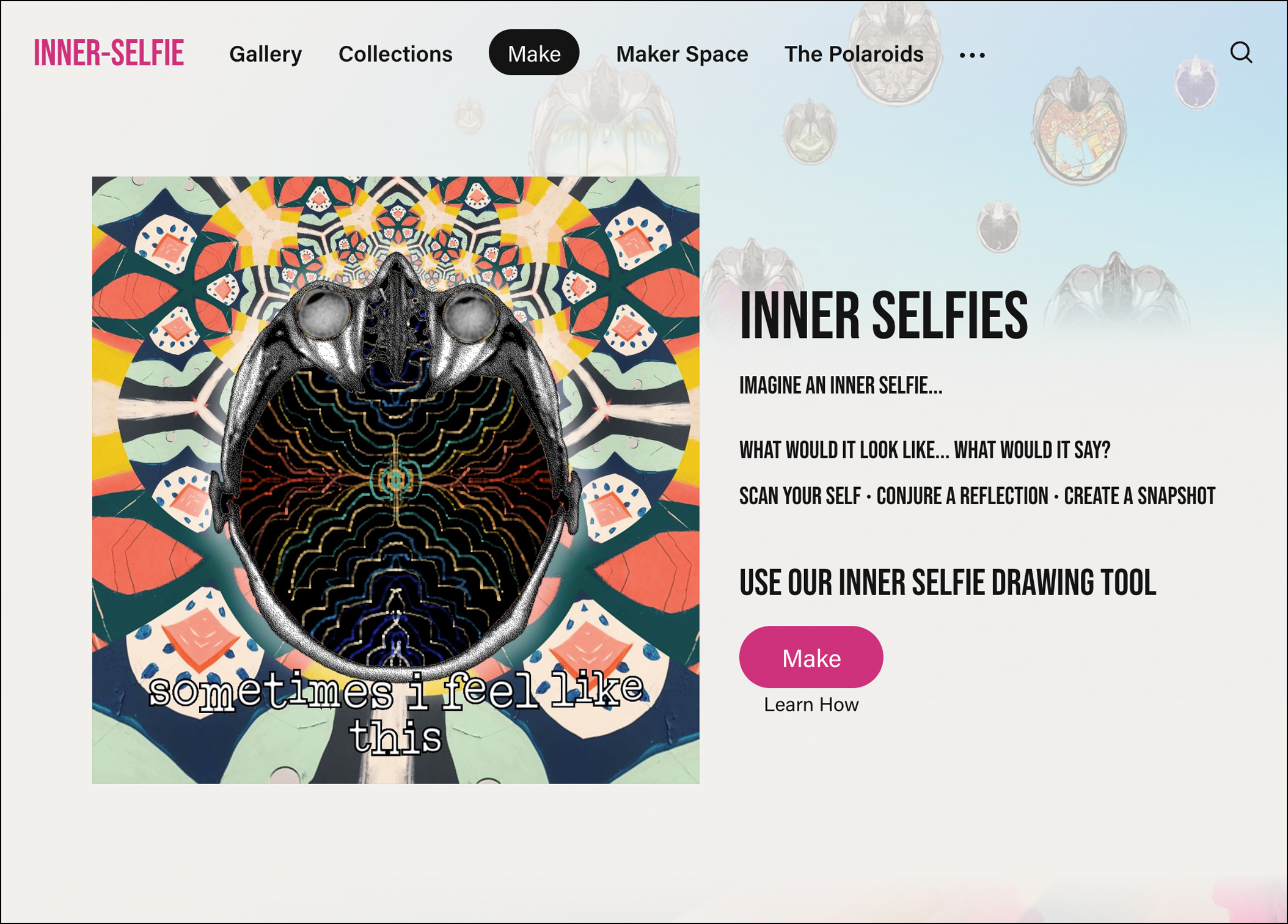
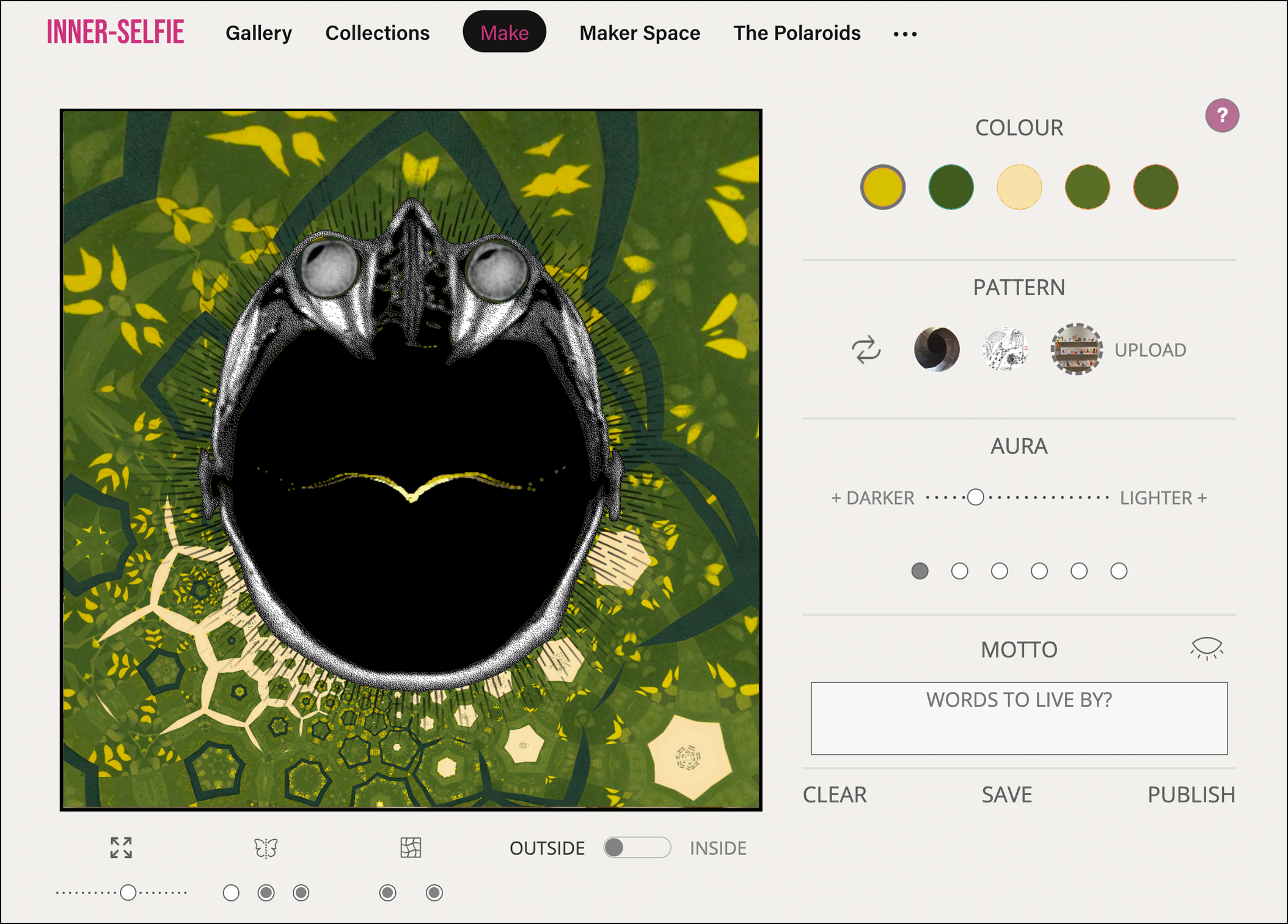

In the best possible way, a hybrid museum – one that programs experiences for in-person and online communities – engages our in-person and digital selves. Hybridity echoes the way we navigate our multiple worlds with communication devices. Shifting spatially, emotionally and intellectually in the everyday myself, I have come to believe this multi-modal method must be reflected in museum engagement practices too. Just before the start of the pandemic, Hanif Janmohamed and John Sobol invited the AGO to participate in their research-creation project: an imagined visitor experience about the inner-self called Inner Selfie. This new project would build upon a years-long pursuit by Hanif previously explored in his Brain Terrains project. We set out on a journey to connect the idea of an inner portrait with the wider history of portraiture represented in the AGO collection. We also aimed to better understand, and convey, the potential that lies within self-exploration, self-directed learning and digitally driven experiences.
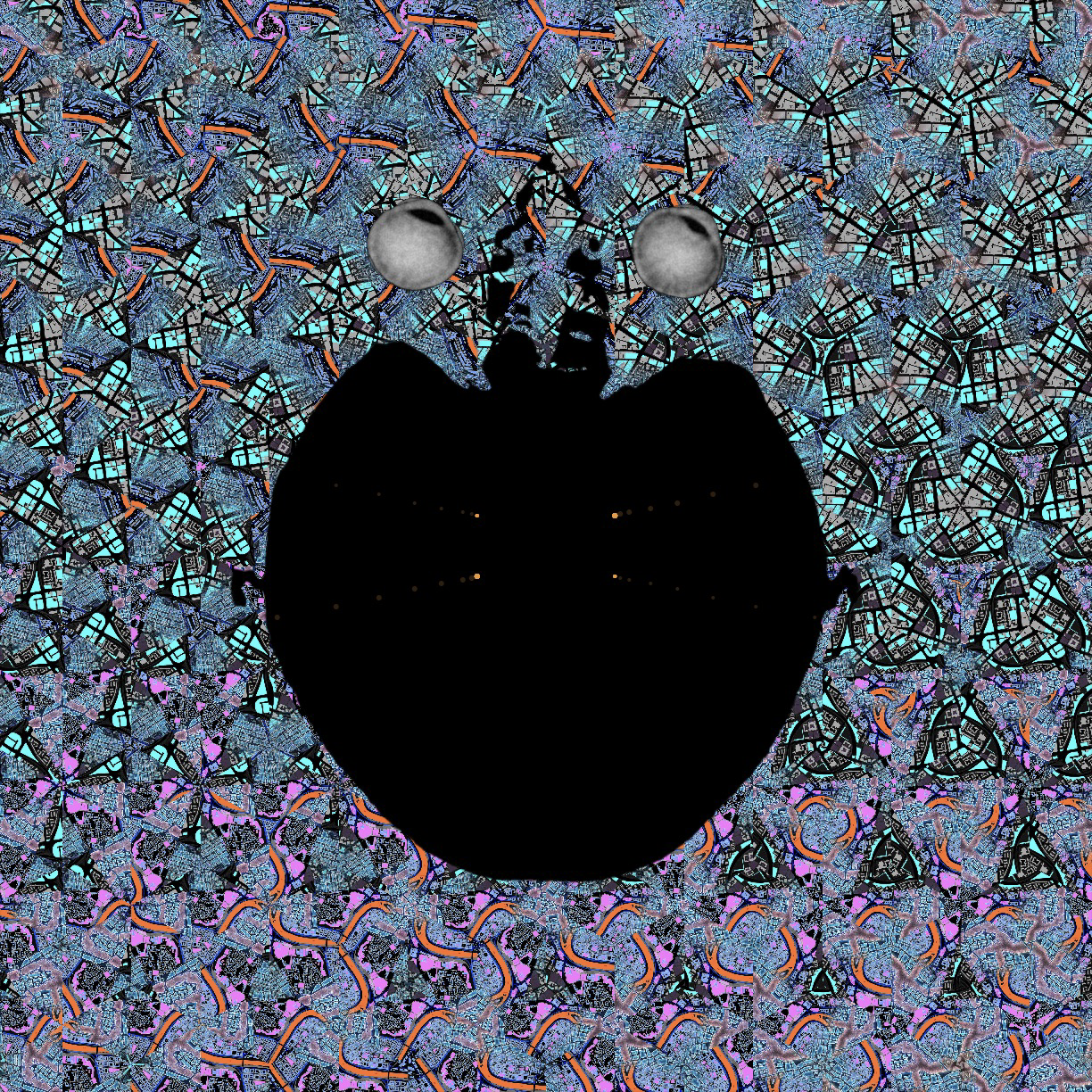
The Glitch.
In my case, my first user journey through the prototype Inner Selfie found a glitch. Whether by excitability or ineptness, I broke the system to what Hanif later described to me as “the glitch of the missing skull.” Visually, in my portrait, I had literally lost my head! (that is, the program’s generic MRI of a skull went missing from view) My selfie above is a black void. It is missing its skull frame due to a programming glitch. Without the representational image of the skull that frames it, my being, in a sense, expanded outward beyond corporeal representation to the resplendent surrounding blue, orange and purple wallpaper. I look at it today as a representation of a liberating possibility with spatial depth too: from a philosophical perspective, the black void is warm and inviting to me. This glitch is my way to disrupt the notion of a common, definable head space. Indeed, I like to imagine that I am turned into a glitchy machine: a museum glitcher reconning with their museum.
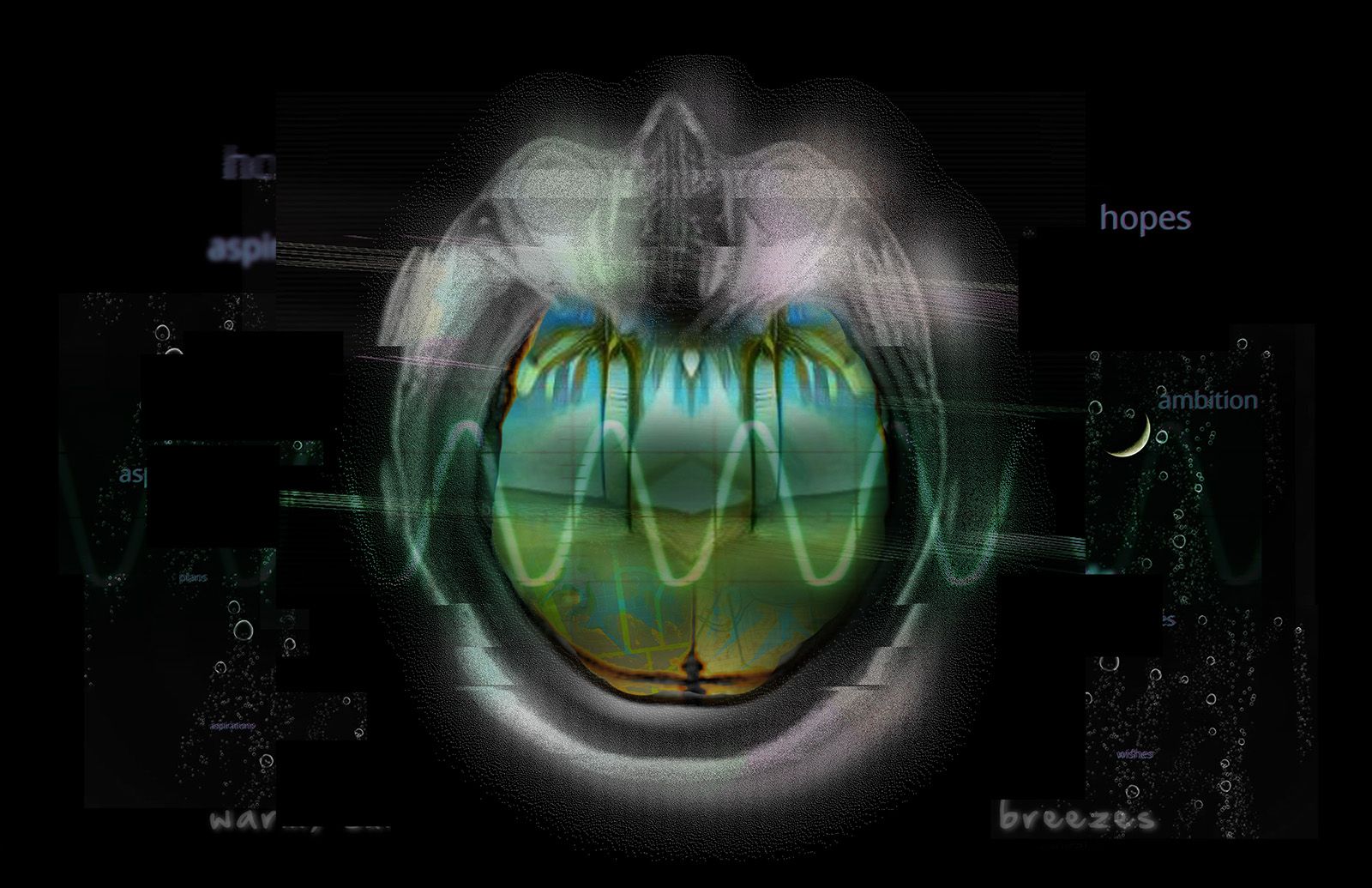
Our Inner Selfie collaboration is iterative. Hanif and Maria consulted many makers in the build process and I workshopped the initial idea of a hybrid maker space with my museum colleagues in 2021 at Cooper Hewitt’s Interaction Lab, where we built on Tools and Approaches for Transforming Museum Experience. We assess, reflect, re-make our theories and responses as makers and viewers too. In its current form, Inner Selfie offers an opportunity to engage people in a creative practice of critical exploration of identity through questions prompting self-reflection (Appendix A) and leading toward a self-representational abstract portrait. The project is web-based, with an accompanying in-gallery experience space at the AGO’s Community Gallery, where people create and share self-representations made with the digital tools, or with paper and tape, or both.
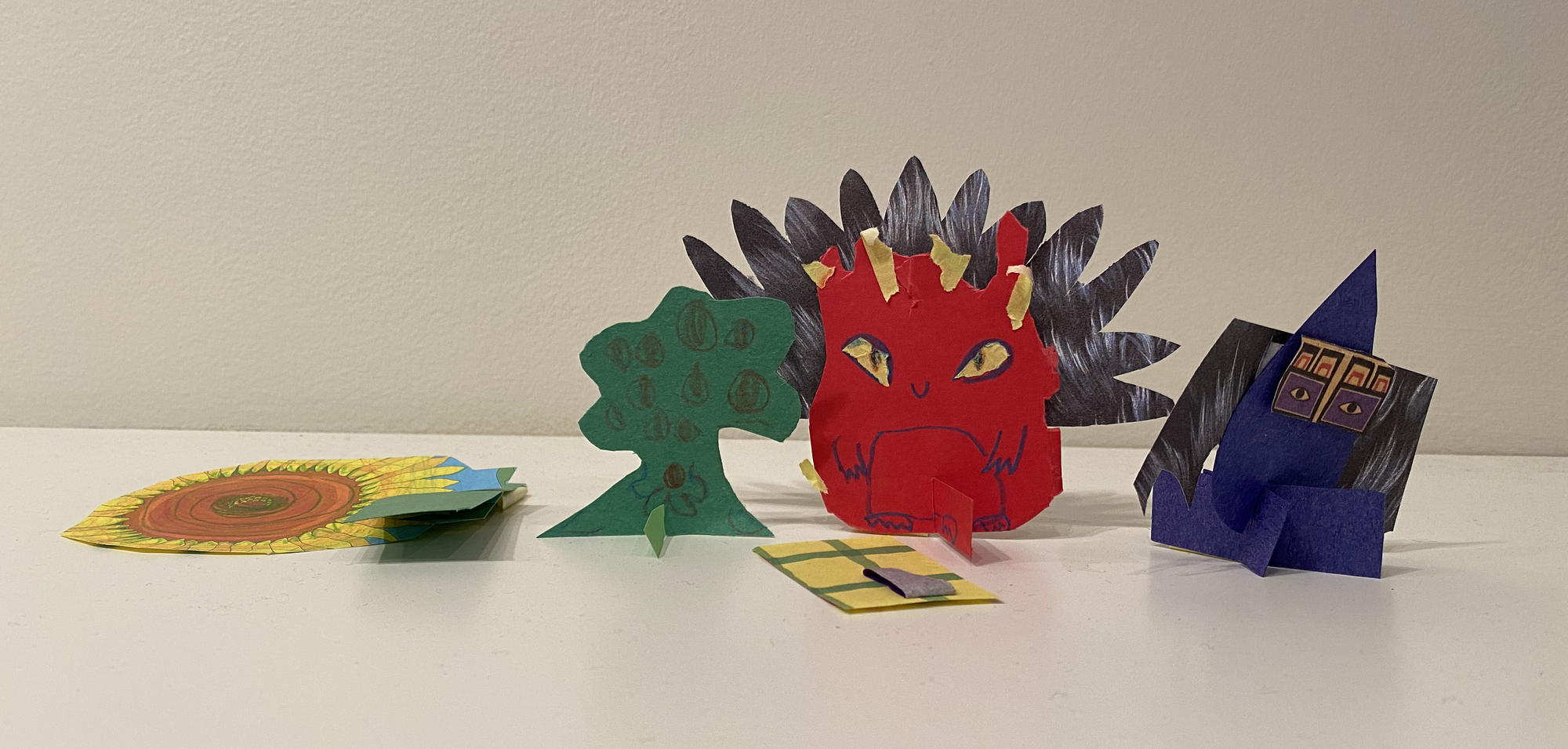
This most recent grouping of Inner Selfies was left over the holiday period by anonymous makers in the Community Gallery.
It was left on the paper supplies shelf – the other display shelves were chock-full of other selfies. I have interpreted that this group of makers have at least two reflections of the inner self: a red, angry, feathered presence, forward-looking and confrontational; and a sly purple self, suggestively demure while somewhat menacing too, with deep bookish eyes. Other potential Inner Selfies are a fruit-filled tree selfie, a flattened sun-like figure and another latticed figure lying flat in front. As a gathering, these selfies offer me a dramatic family story, where my impressions are as fantastical as those choreographed by their makers (who are often families with young children). Why does this all matter to the museum’s ability to engage with people, telling and sharing each other’s stories? These creative moments offer glimpses of how museums facilitate connecting people and communities.
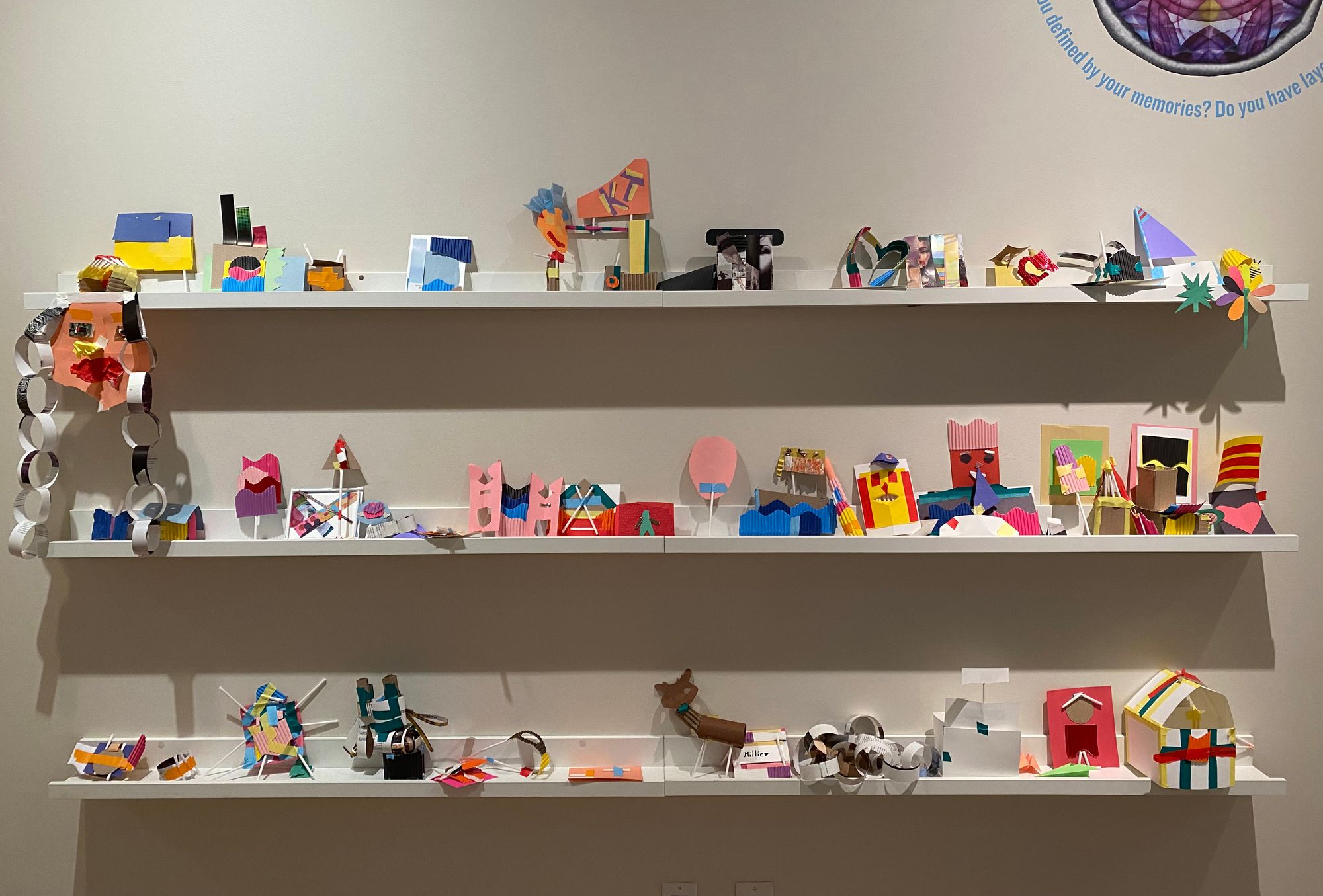



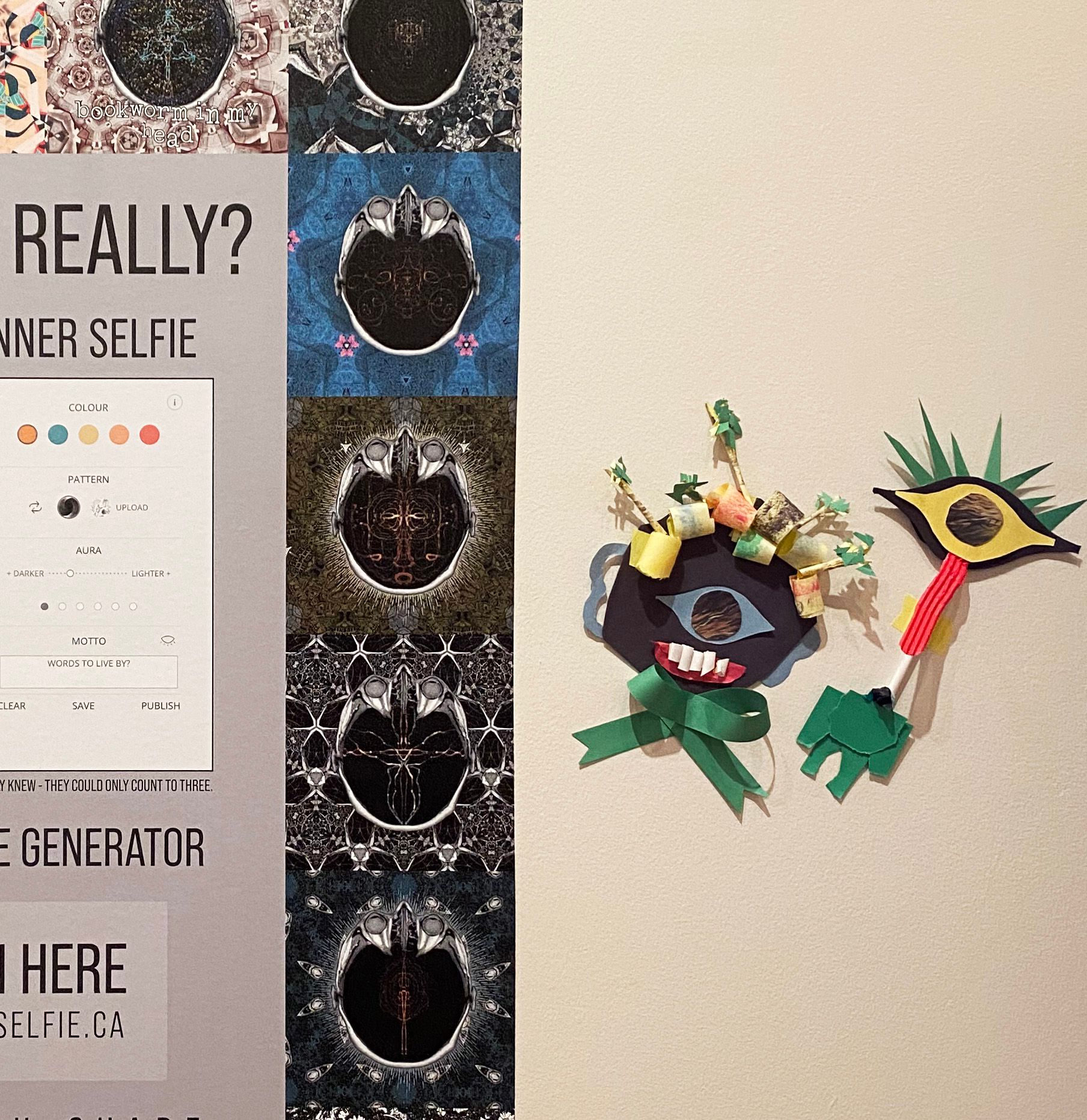
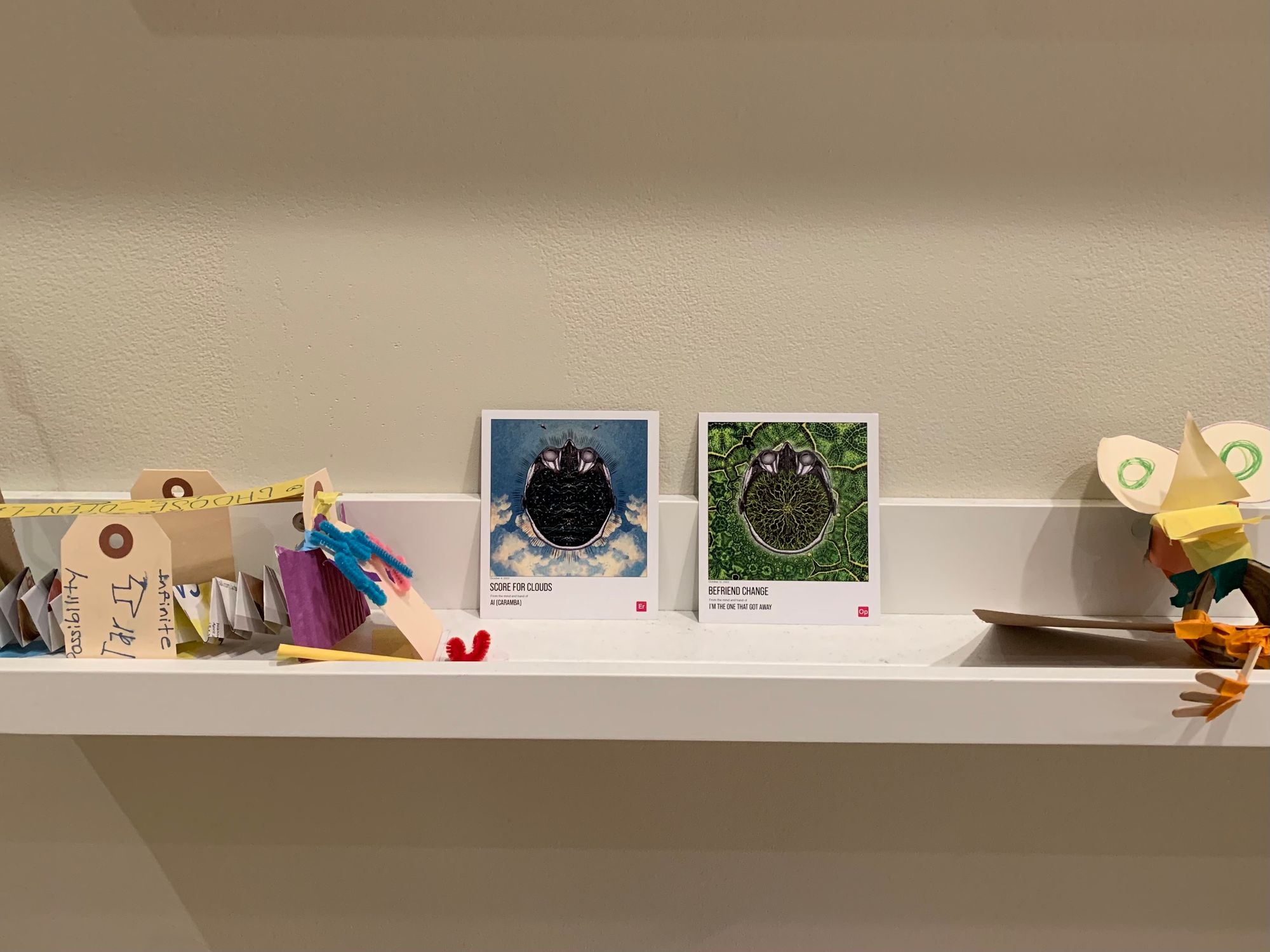
In an attempt to provide us with further insights, in-person participant surveys are underway, led by Melissa Smith, Program Curator of Collaborative Learning at AGO. We are specifically interested to know how people in the physical space are connecting the in-person experience with the online project. Our goal is to use the findings to make visitor-informed iterative changes to the space that might strengthen the connection for people to the online experience. Users of the online Inner Selfie project are also inspiring changes to the interface. Hanif and his unstoppable artist-collaborator, Maria Lantin, are tweaking the design. Over the gestational period, the engagement questions guiding the Inner Selfie experience became two sets of questions. The first, for the online experience (Appendix A), probed the self through a philosophical lens; while the in-person questions (Appendix B) became more sensorial and connected to artworks in the AGO collection. It made sense to us to connect the first set of questions to a person answering from anywhere within their digital space and/or architecture, and the second set to the specifics of the AGO museum space. We felt it was important to connect the exploration of our personal selves to the museum collection’s vast examples of self-portraiture and figurative art. Though intended to bring traditional and contemporary representation into dialogue, their difference has also resulted in two distinct online and in-person experiences that struggle to fit well together. This is an unintentioned outcome. In the exhibition, the questions devised by the museum support meditating on your favourite taste or smells, asking for a multisensory inquiry into the self. With lead-in images of selected AGO artworks, the associated questions offer visceral provocations through our likes and dislikes as a deliberate means to get to acknowledging something about ourselves and perhaps the art too.
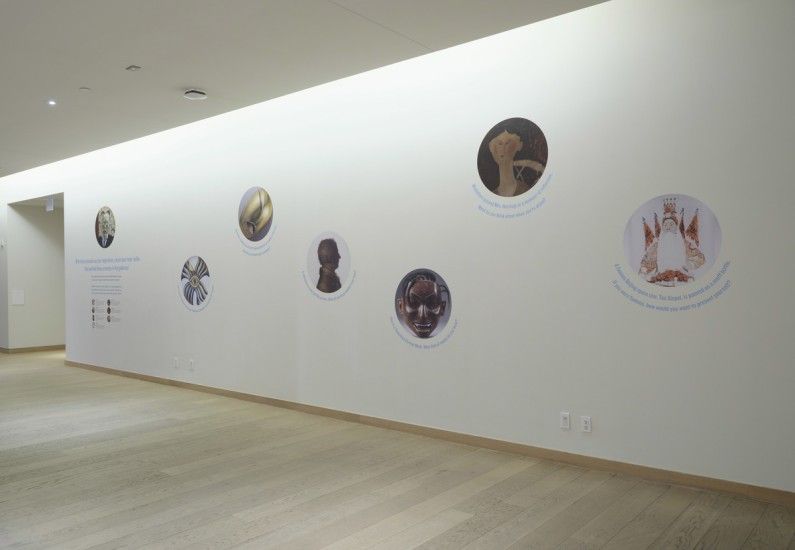
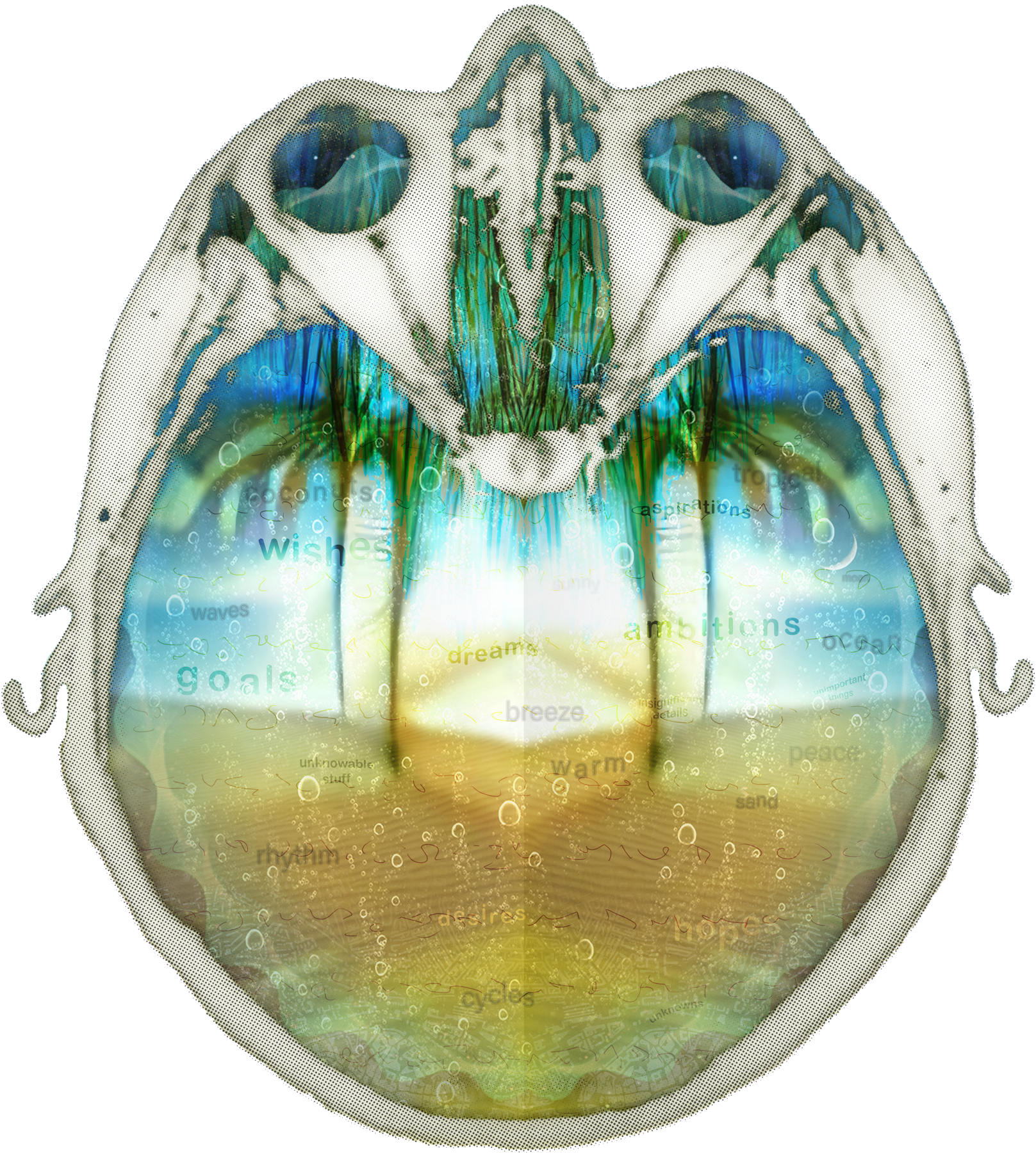
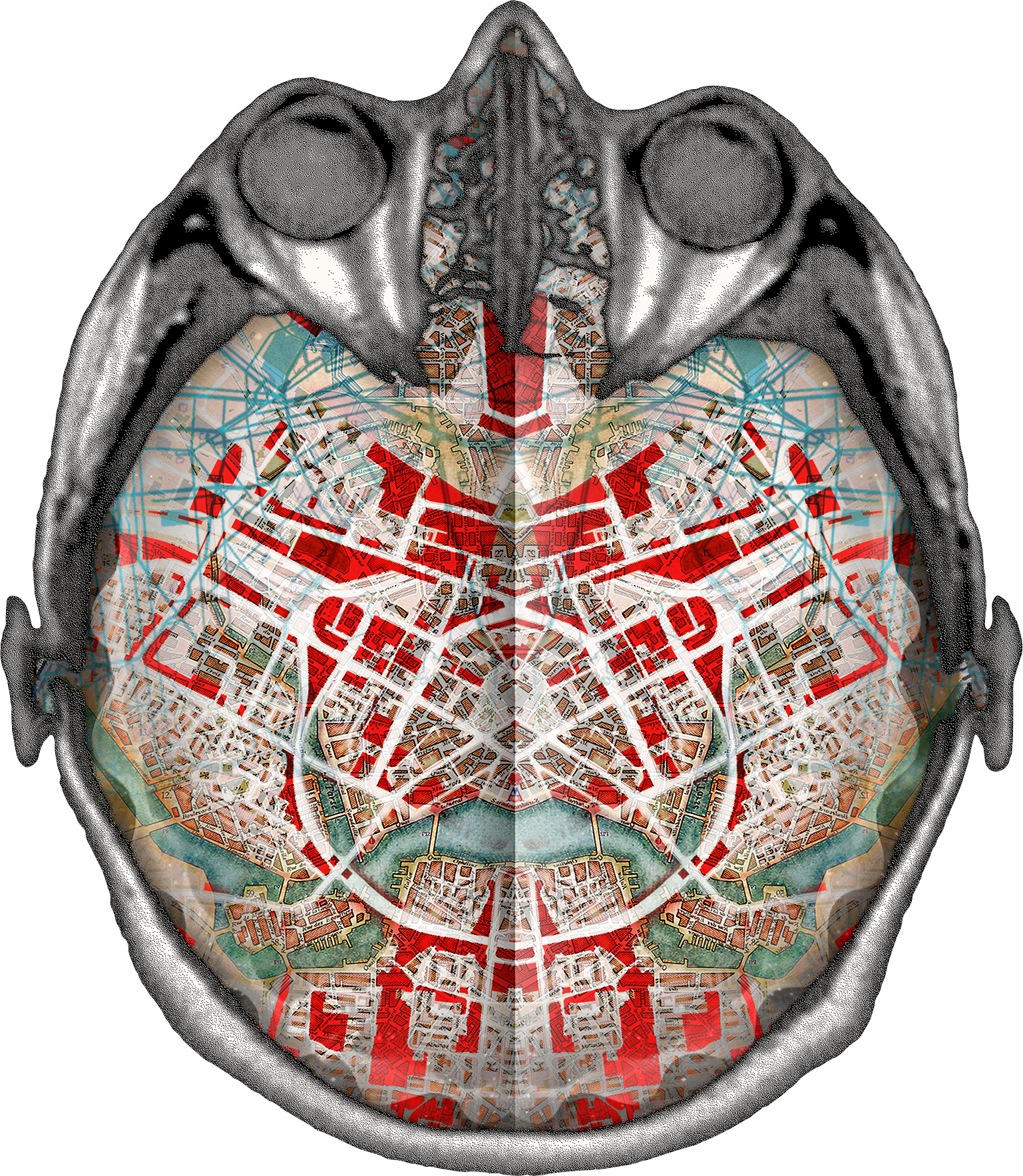
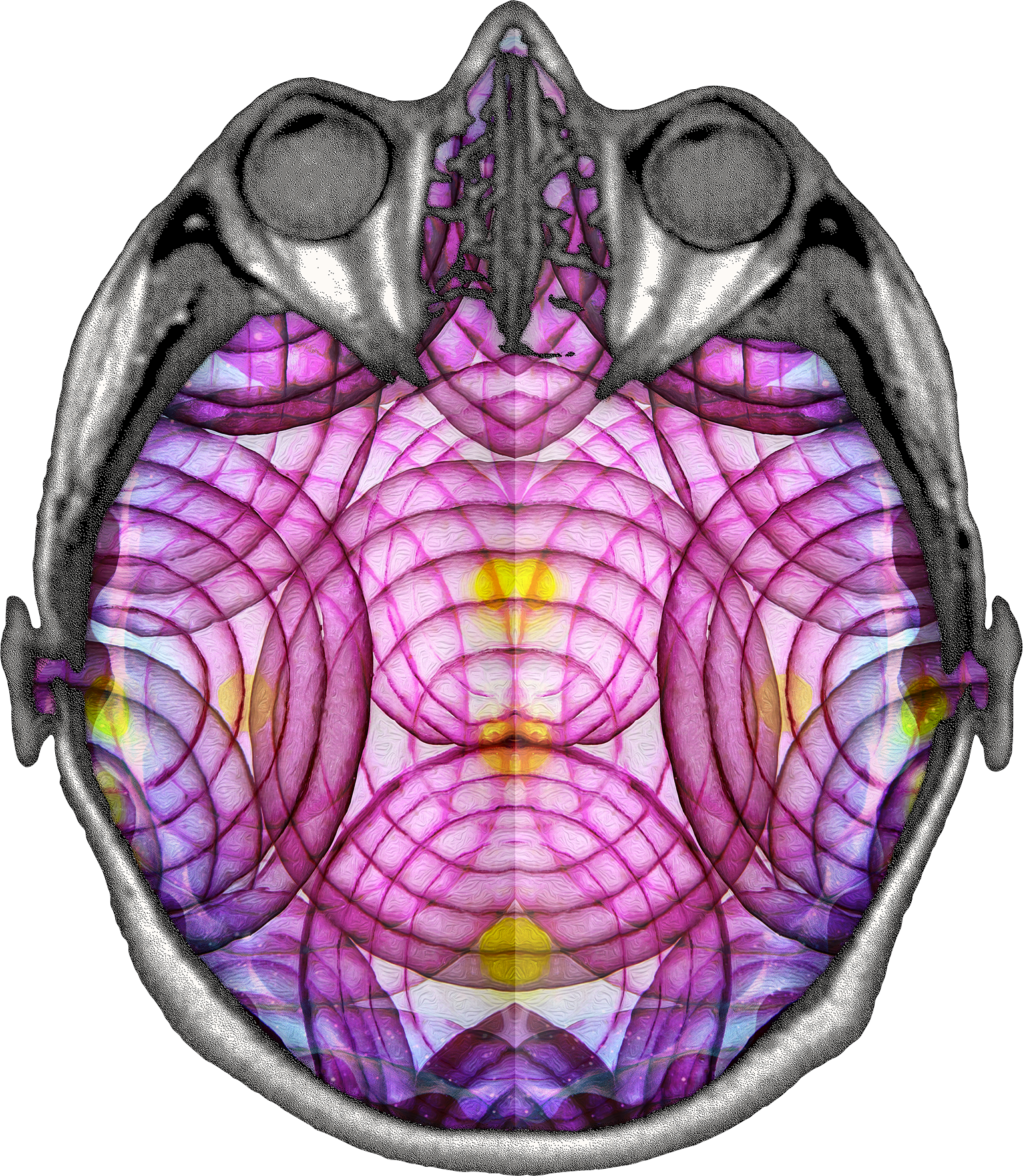
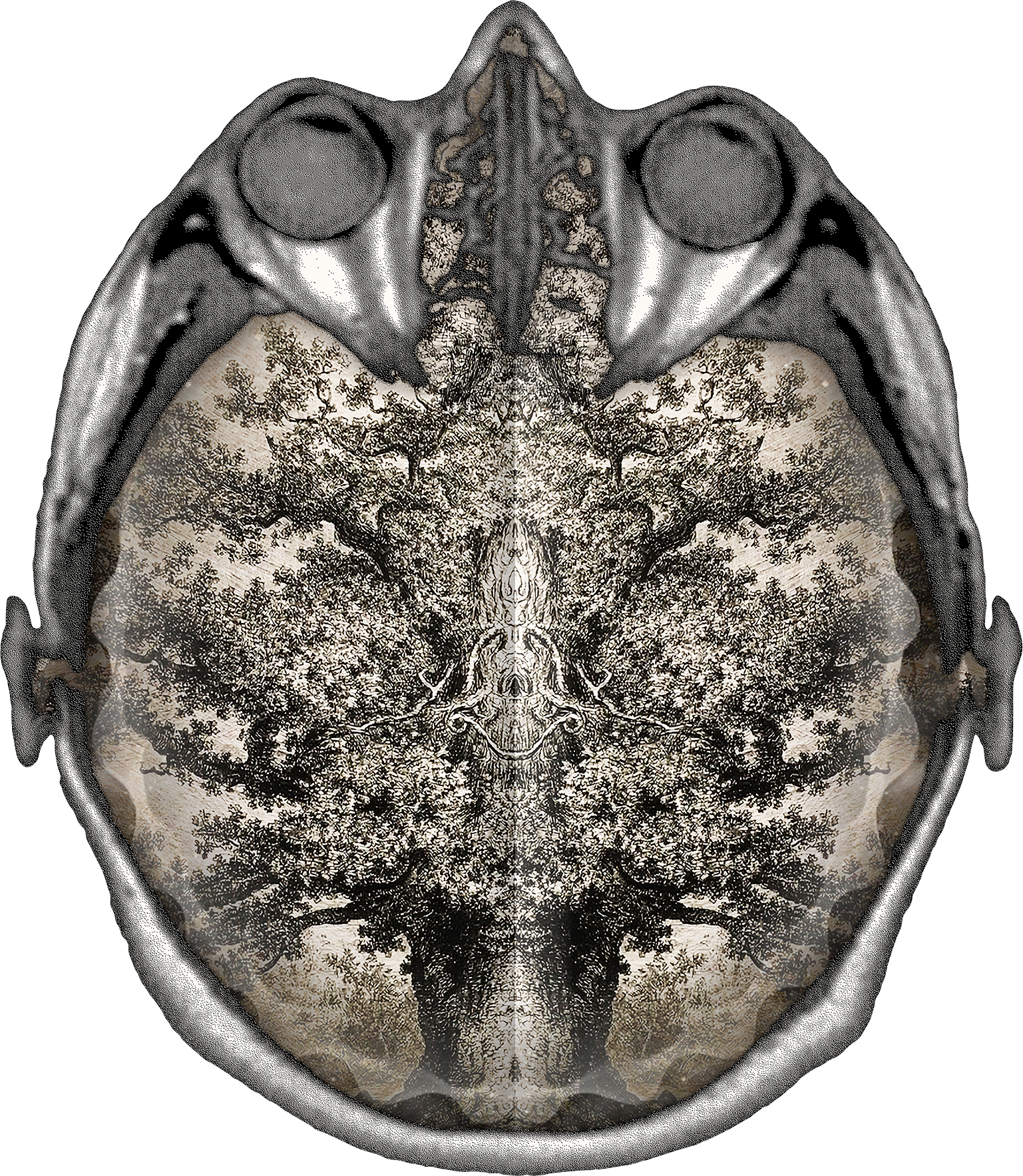
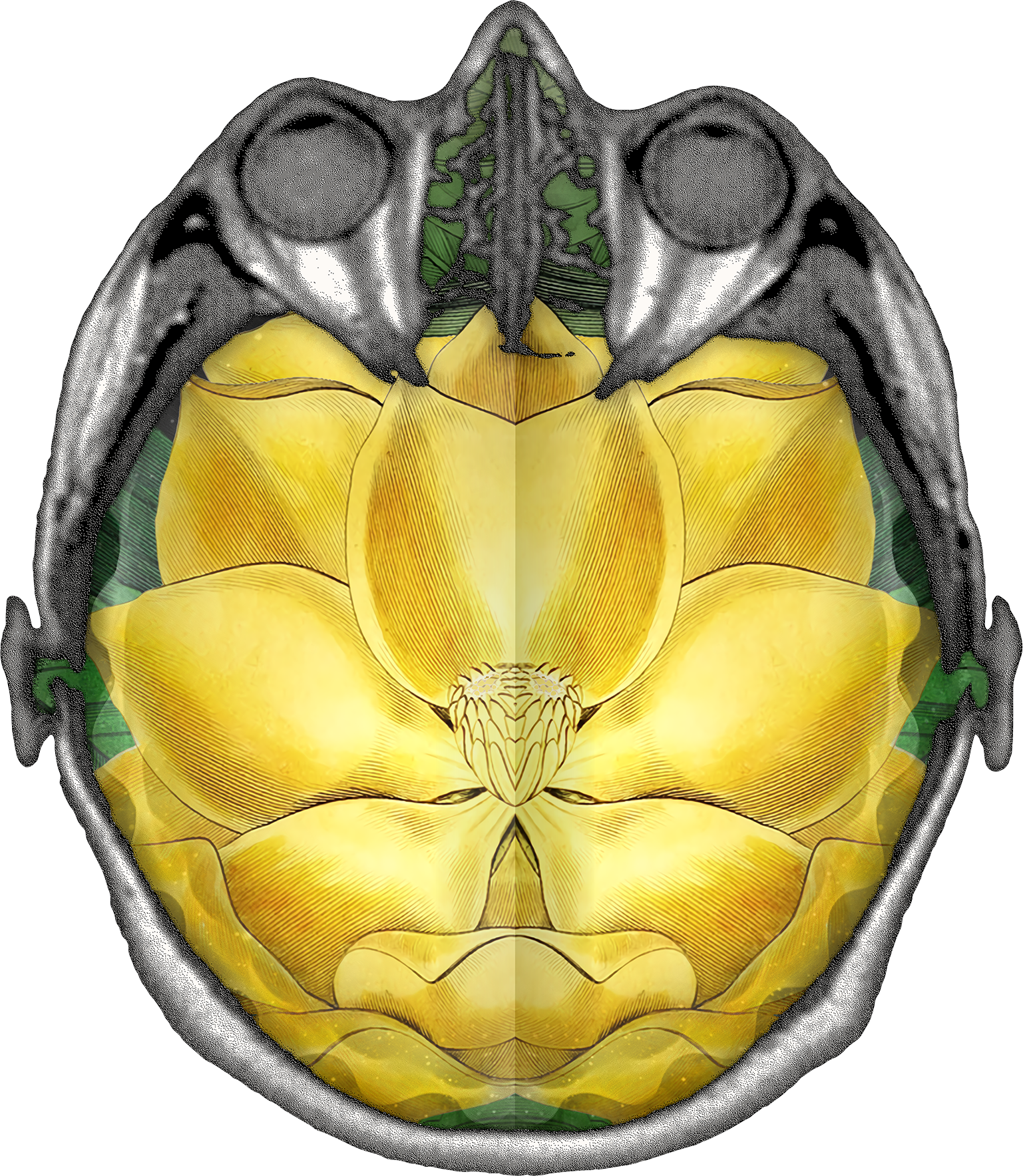
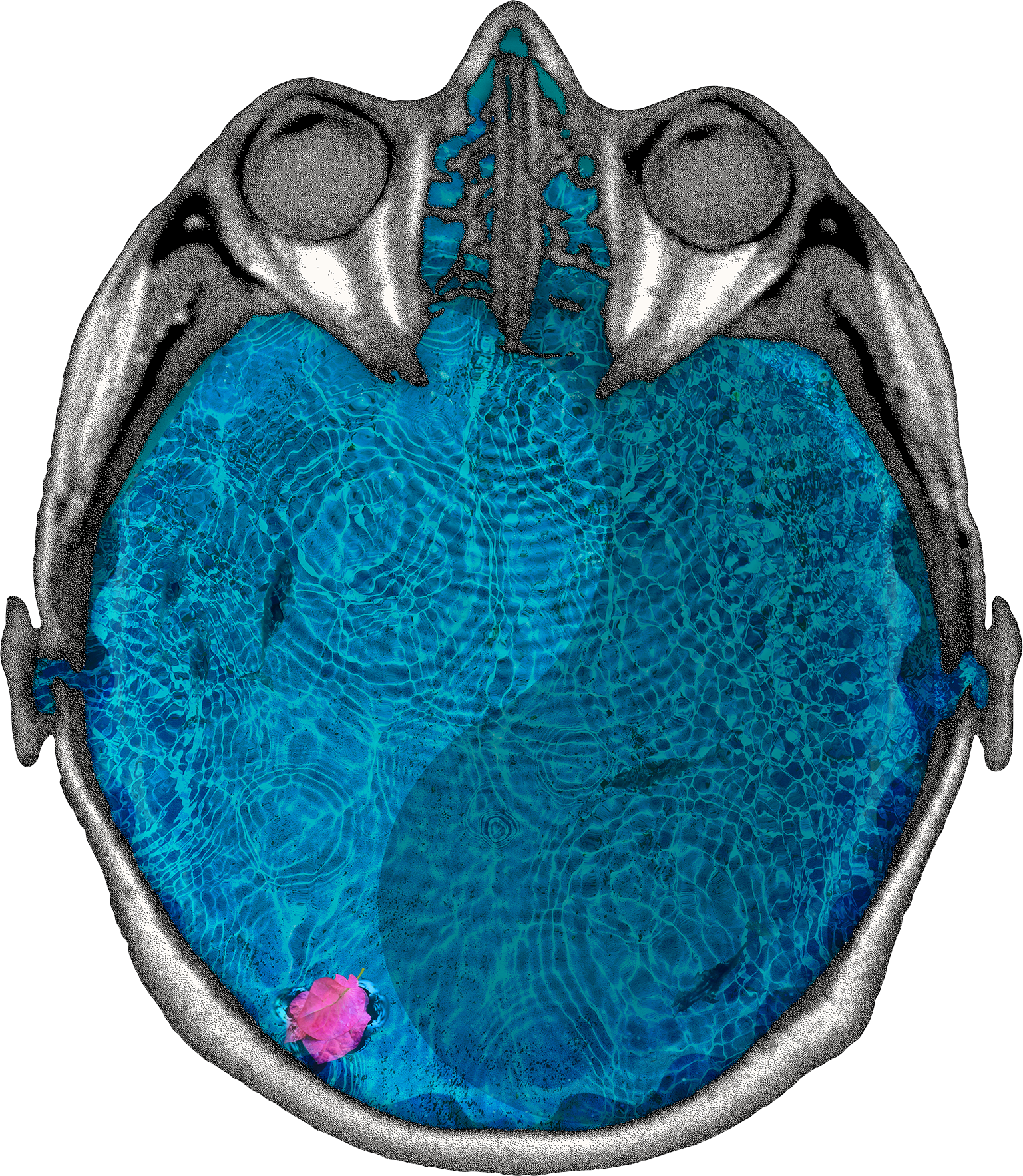
Inner Selfie conjures up the words of Legacy Russell in Glitch Feminism, whose manifesto describes the liberatory potential of our lives when fully taken up simultaneously in person and digitally. In a self-reflexive way, she says we can embrace the glitch as a rupture toward liberation: “glitch manifests with such variance, generating ruptures between the recognized and recognizable.” (2020, p. 28) They write on, “In these breaks and system failures, we find new beginnings. The digital skin – the screens through which we embrace range, politic via play, and toy with different modes of representation – remains a necessary precondition of the Internet avatar. Avatars can become rhetorical bodies, ones that challenge how and why we perform our abstract and varied selves toward the goal of becoming our truer selves, both on- and offline.” (2020, p. 102) So just as there is a dissonance in the exhibition as a vessel for the digital art experience, we might nonetheless feel connected to community (our multiple selves and others). The collective is manifest through this idea of hybridity, all the while making visible, celebrating even, breaks in the (museum’s) machination of society. That said, considering the multiple perspectives and conceits being applied in the space, how might we reimagine digital and tangible museum space using multisensory and hybrid approaches? For example, what can a multi-sensory experience that defines our uniqueness by our favorite tastes or smells look like in both a digital and in-person museum space? These questions might bring new ways of connecting us to art and getting to know ourselves better.
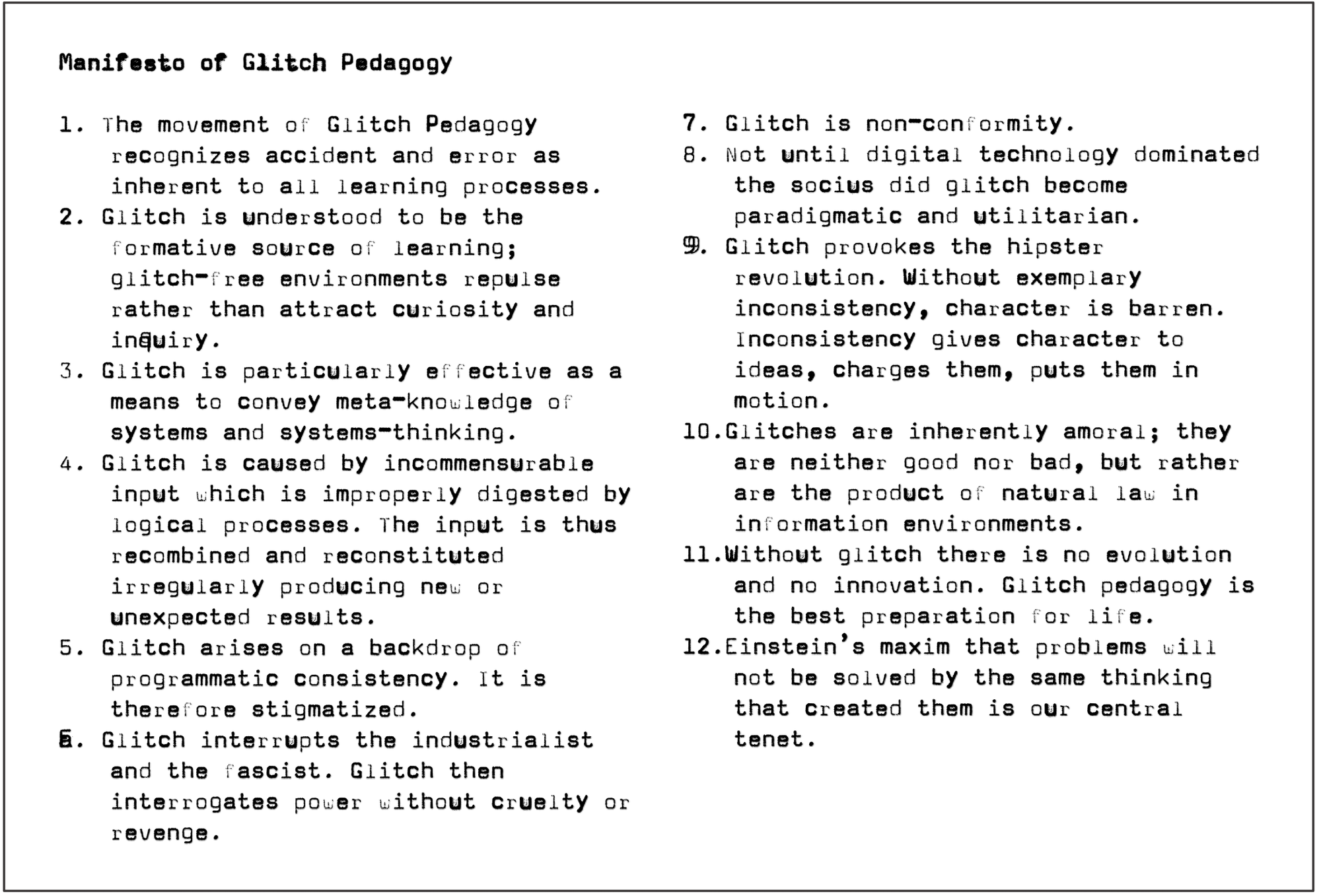
Ernesto Peña and Kedrick James take the idea of glitch as a learning tool, where the composition of images (perhaps even of our Inner Selfies) are ways in which we can embrace mistakes without having to necessarily determine them as errors of the machine or in ourselves. In A Glitch Pedagogy: Exquisite Error and the Appeal of the Accidental, they connect inquiry-based learning to the glitched panoramic photograph: these are intentionally made images that are choppy and pixilated, and in some sections of the composition, the quick movement of the maker forces computational mis-reads of the panoramic view leading to black sections of the picture plane, so that the digital image is partially captured. This here is an example of one of my glitch photos.
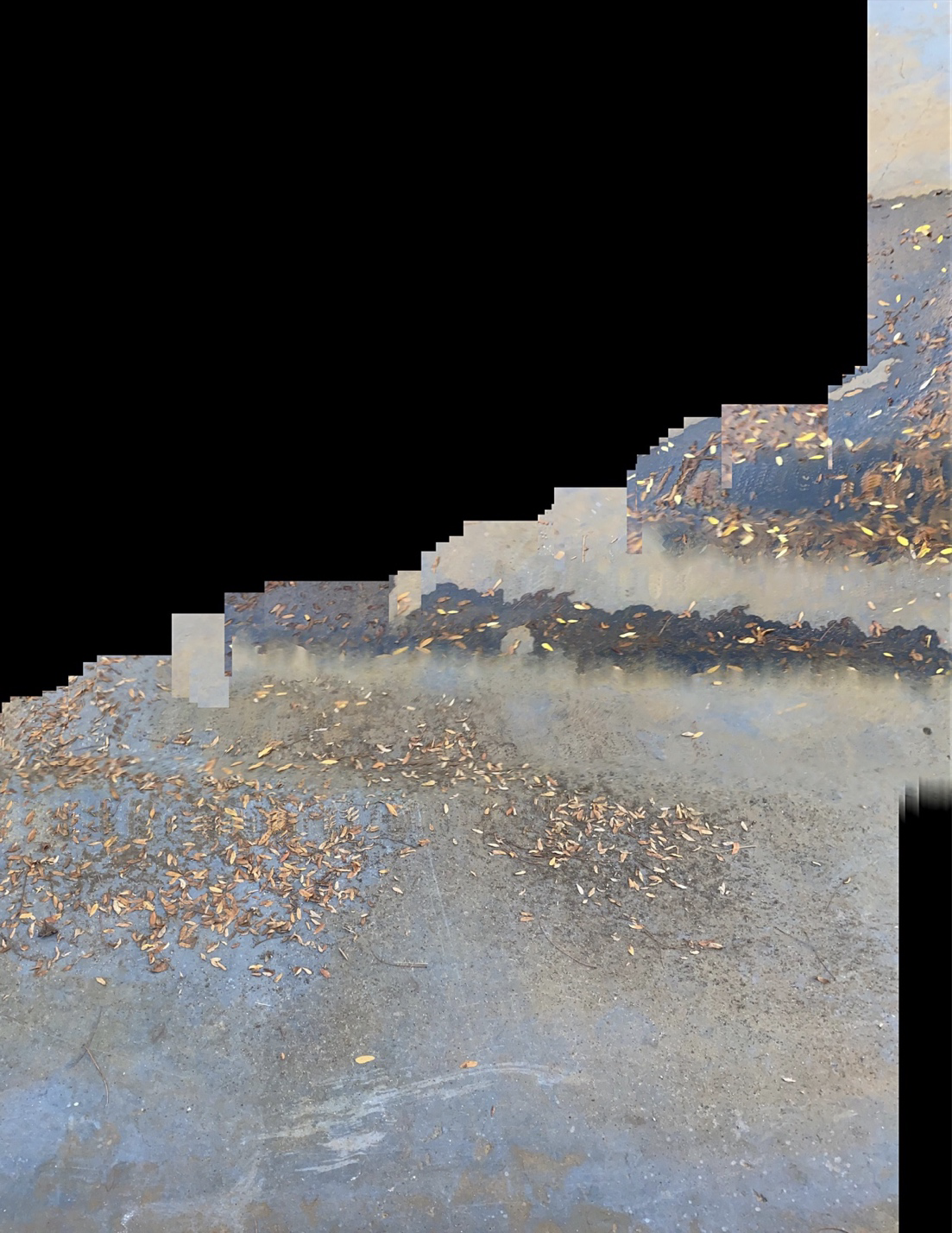
Such images evoke movement as well as showing their creator’s process of making the photo. The idea of glitch resonates with my own photographic practice and it’s why my own inner selfie creation was so exciting to me. With what Peña and James call stitch-skipping in the creation of panoramic photos, glitching becomes a way of creating “visualizations of the sequential processes that went into their making. By doing so, the taker of the photo is formally represented in the resultant image, even though they do not appear as subject. This makes the malleability of representation much more obvious…” (Peña & James, 2016, p. 116) Peña & James are getting at the incredible excitement or curiosity one experiences when creating something that looks both unexpected and unfamiliar. These are strategies well used by the Surrealists, Dadaists and others through exquisite corpse games, collage, etc. The glitch becomes a way of abstracting our visual planes, hoping for some greater essence or knowing to emerge. It is not so much through a realist lens that I read the making of myself here, whether with photography, paper and tape, digital tools, or even make-up and clothes. Rather, the process of playing and creating new abstract forms of myself propels me and inspires me. Curatorially speaking, I wish for participants to do and feel the same excitement and curiosity.
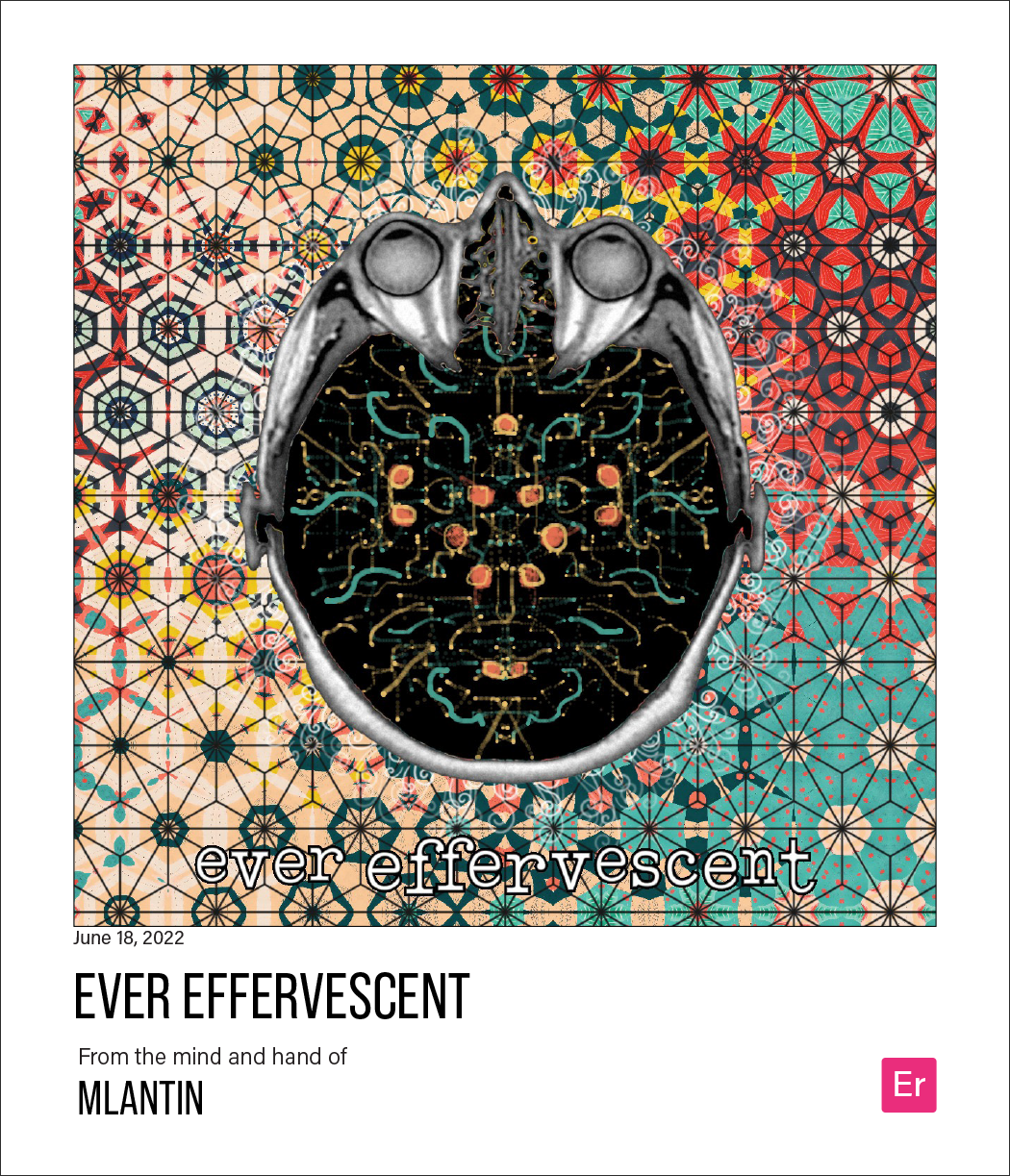
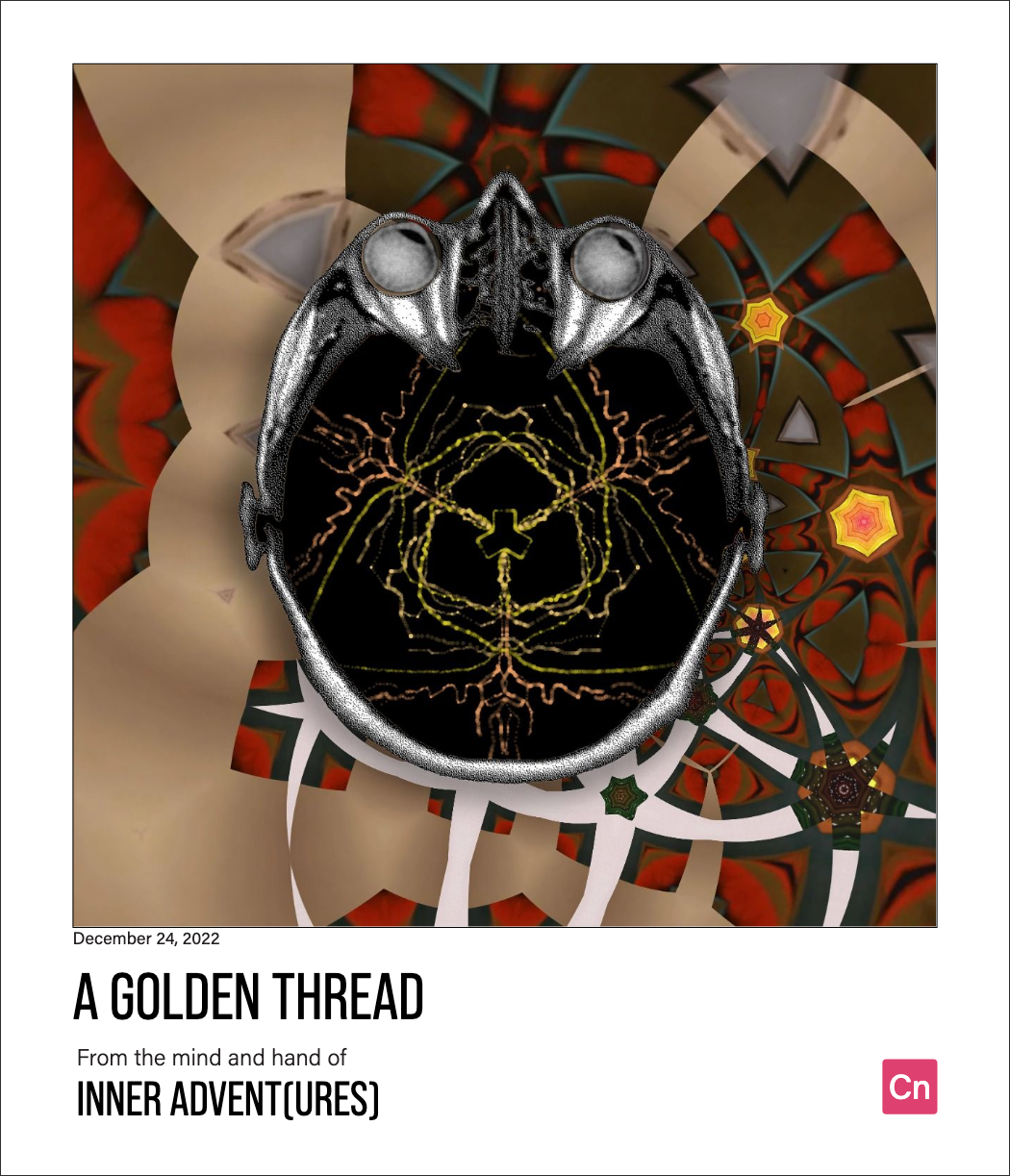
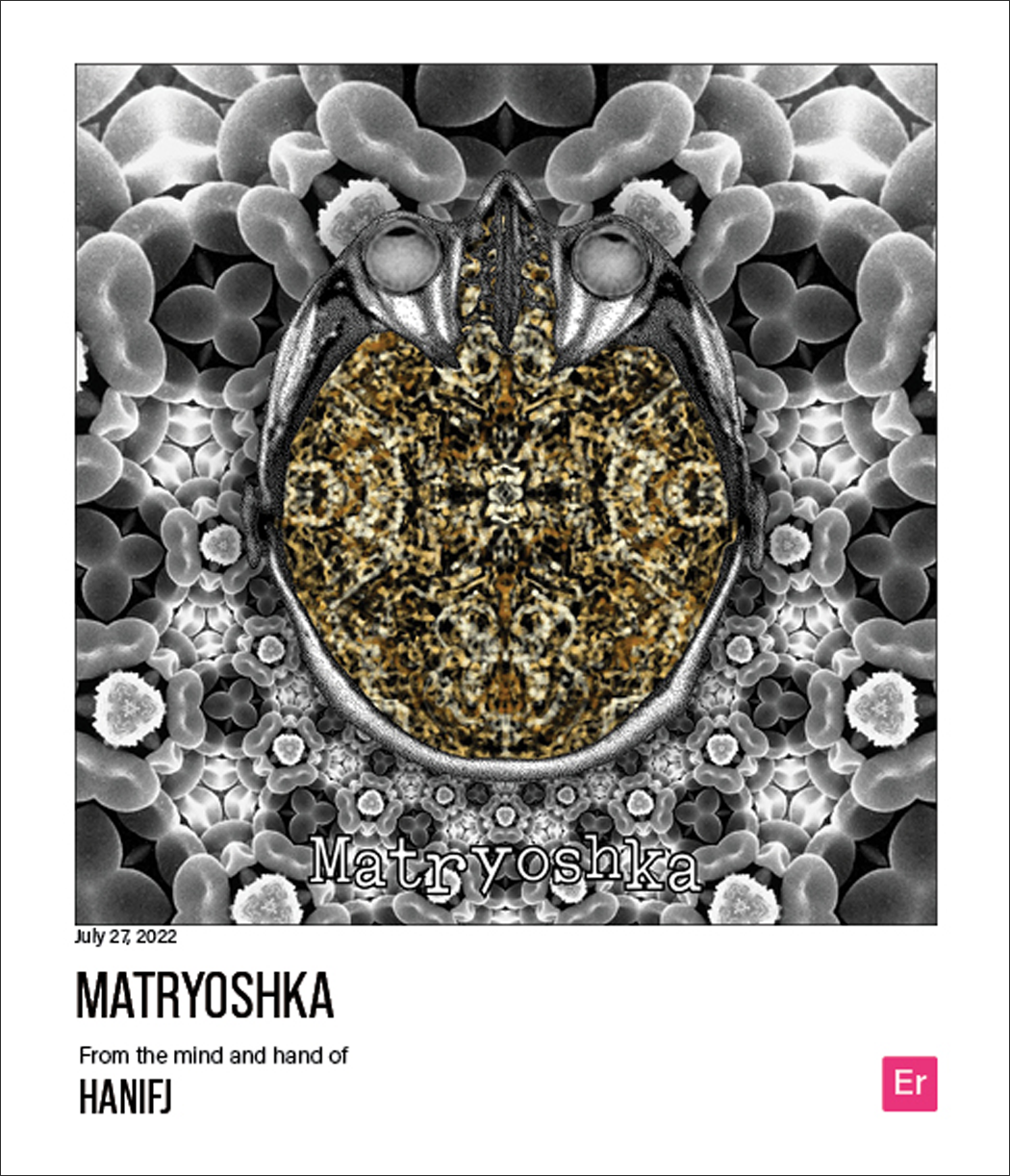
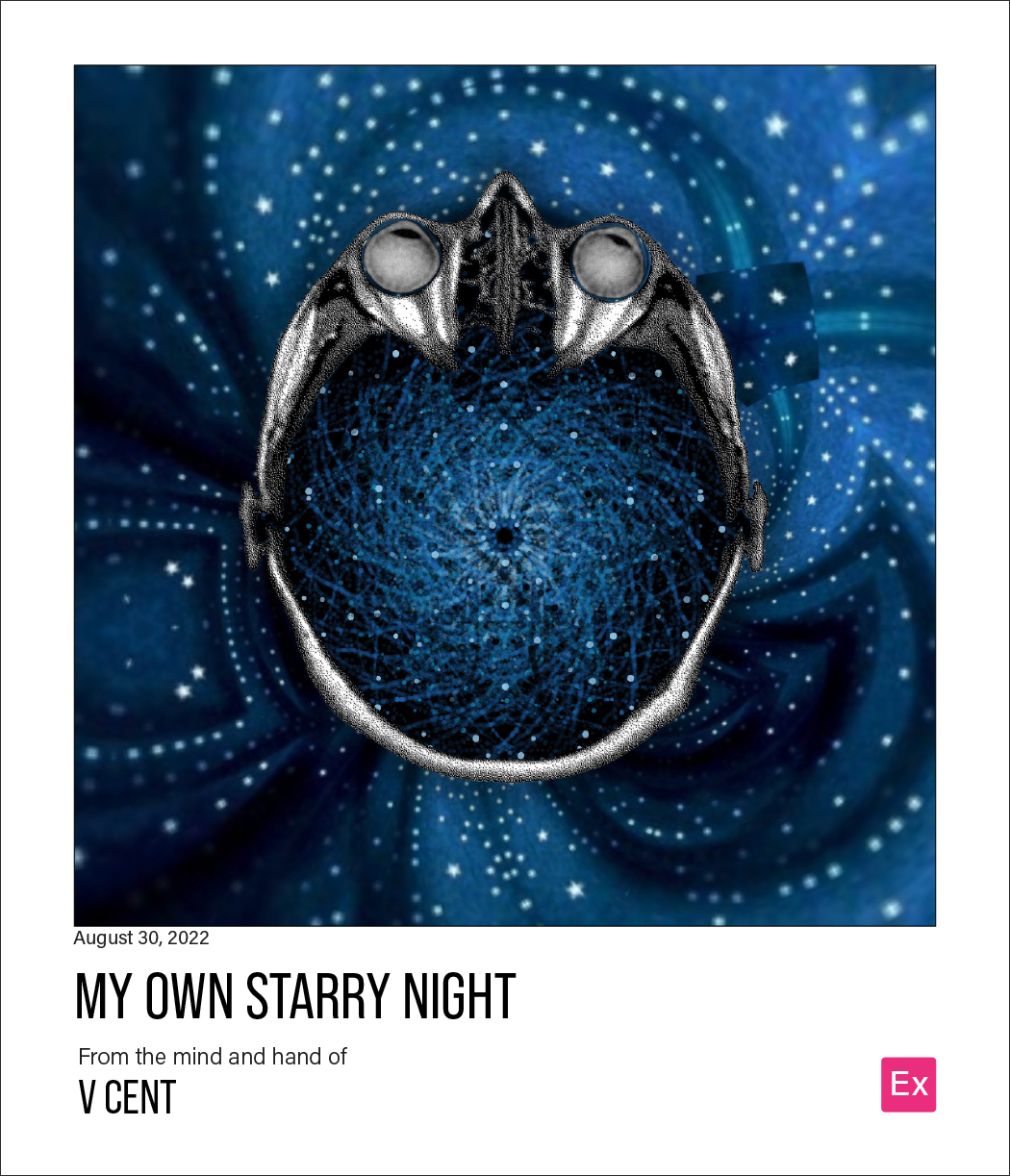
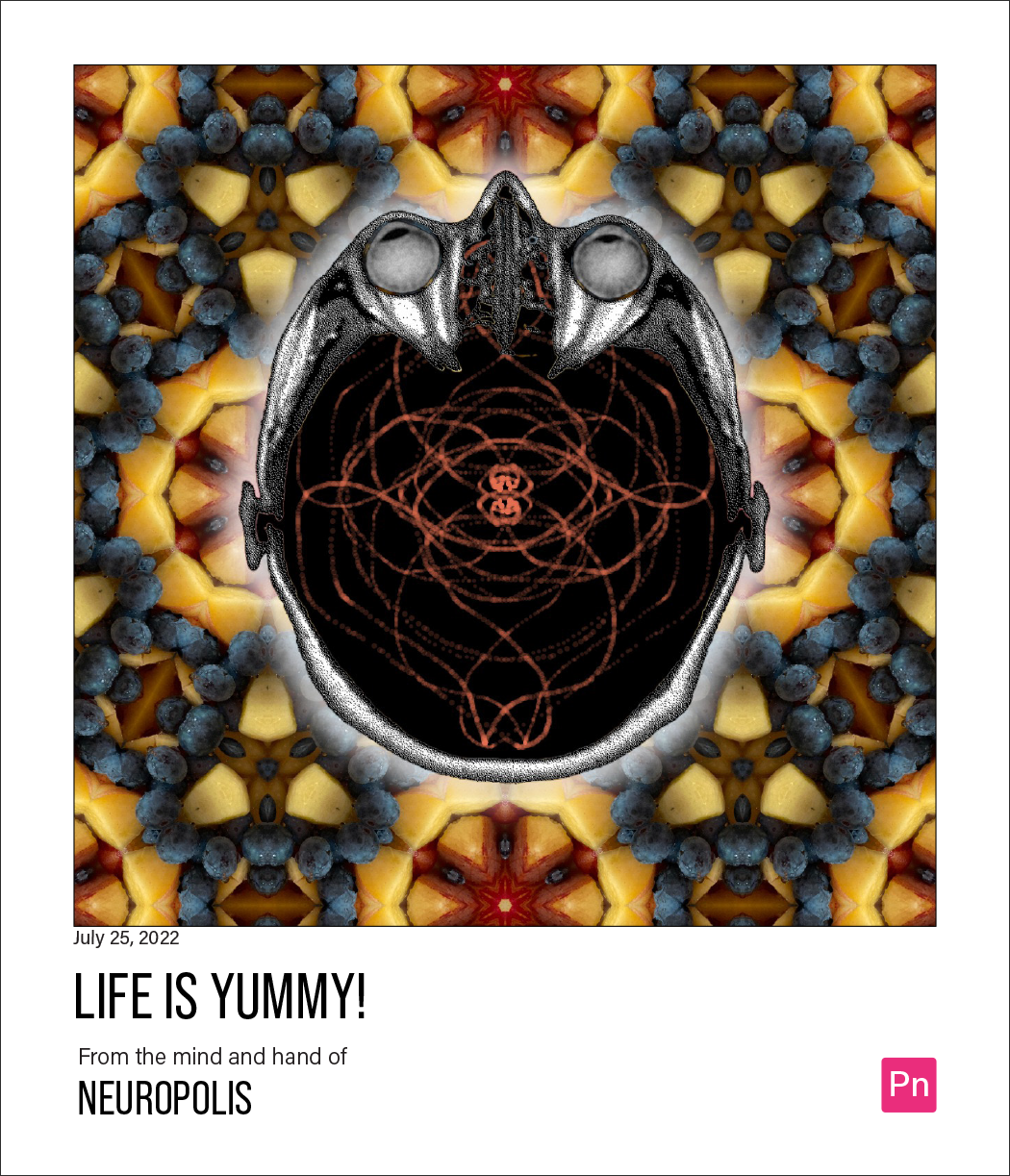

I got to know Kedrick James a little through the Inner Selfie project and appreciate how he combines poetry and analysis in his being. Hanif also introduced me to the work of local philosopher Jonardon Ganeri. In his book, Inwardness (2021), Ganeri guides us through the many ways in which interiority has been understood through metaphors of light and darkness, illuminating variations and contradictions, and their blending over time. His idea of the inner self as a vessel to be filled intrigues me because as a vessel, I can imagine an interiority that is dark and empty or fecund; fillable and emptied, and not merely one emotion, feeling or state of mind. My Inner Selfie head from this viewpoint becomes a vessel space - fillable, filled, emptied, half-full or half-empty, and full of exciting contradictions.
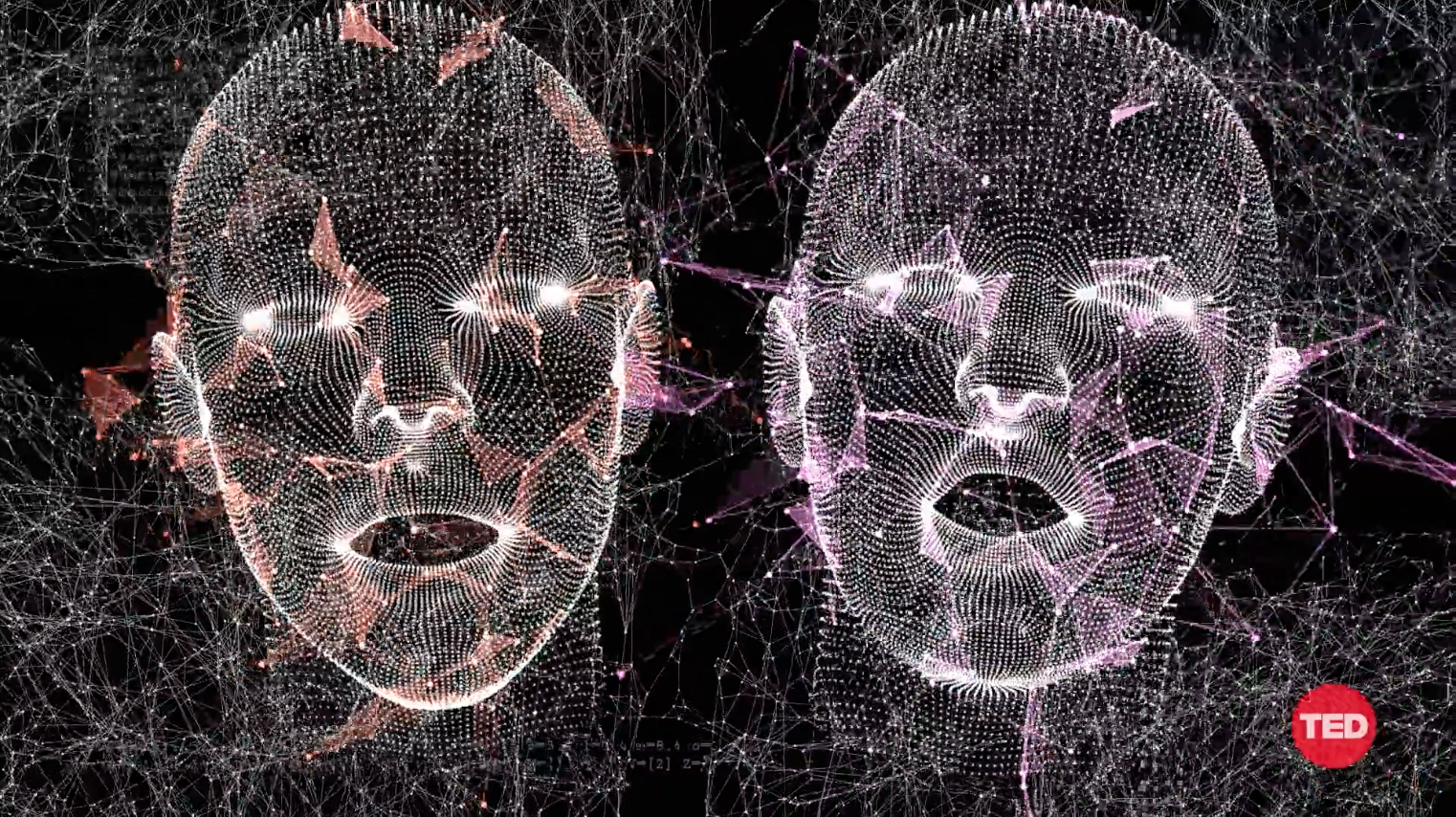
In A celebration of the history of the internet in art and sound (2020), a monumental digital media video work by DJ Spooky, there are two humanoid heads, also with black voids. Cavities, their mouths (voice, speech, utterance, cry, coo), warm and vast, and also scary, sterile even. This everything and nothing space excites me wholly. However, one chooses to understand themselves, Inner Selfie is one such way, resplendent with colour, filled with possibilities. For me, the invitation to create a representation of my inner self offers a way of gathering, looking at and thinking about our many selves. It might even lead to a perpetual remaking of ourselves into forgiving, resplendent and sustainable peopled places, that feels different somehow. For me, it’s also where the museum can thusly rally us toward greater intentionality, criticality and imagination, and common good.
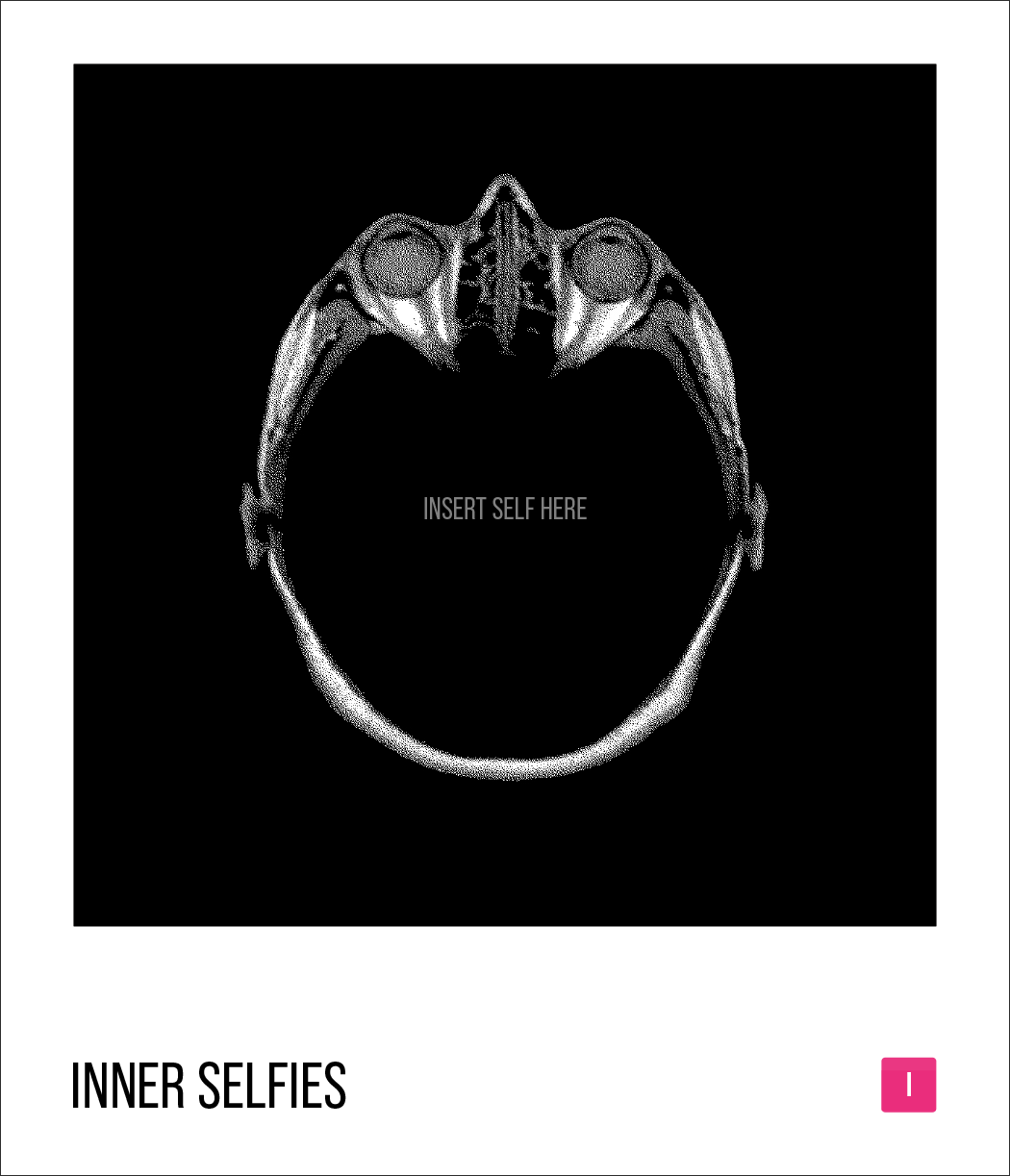
Appendix A - Questions in the Online Questionnaire
Appendix B - Questions and images in the AGO Community Gallery